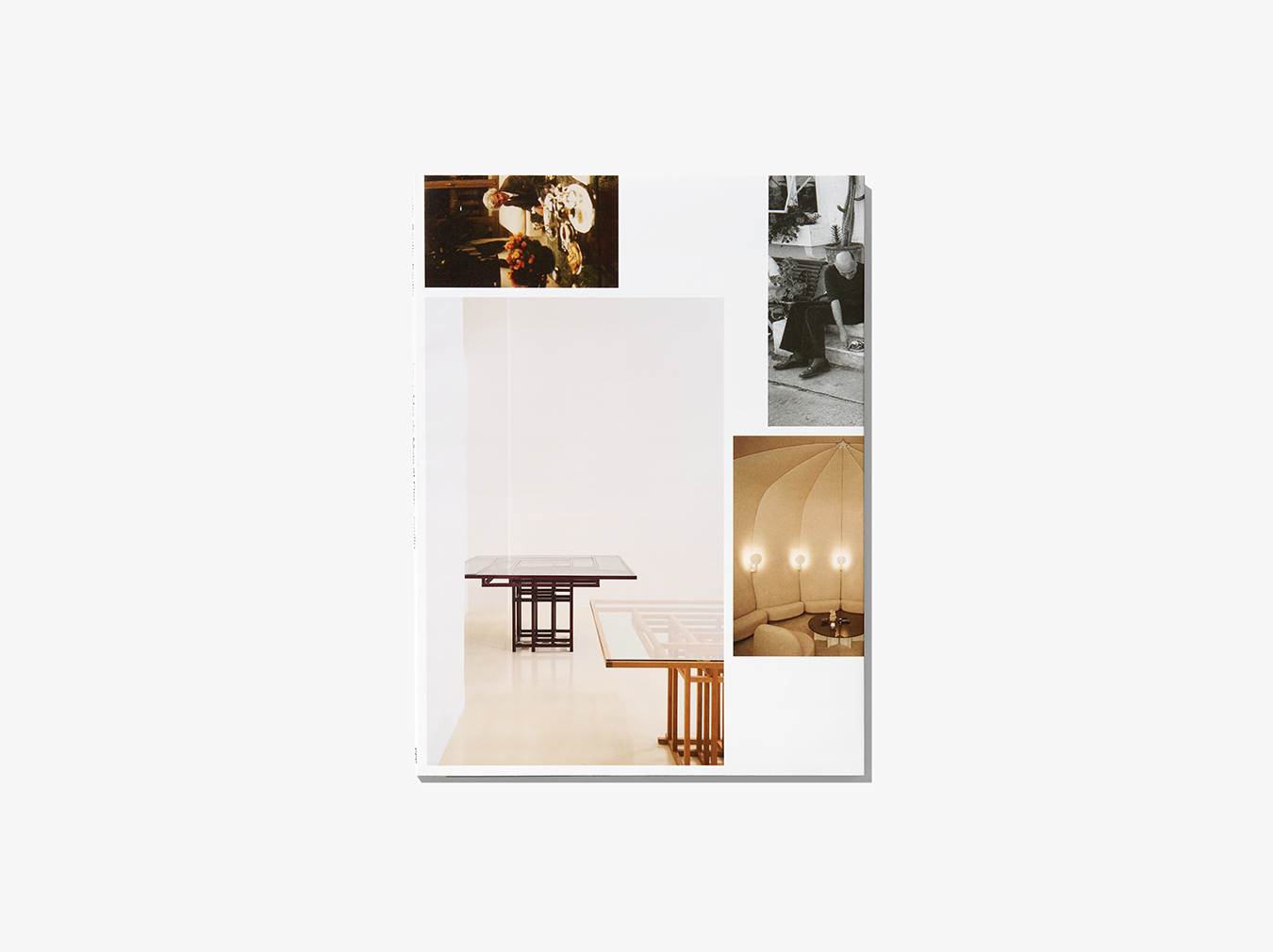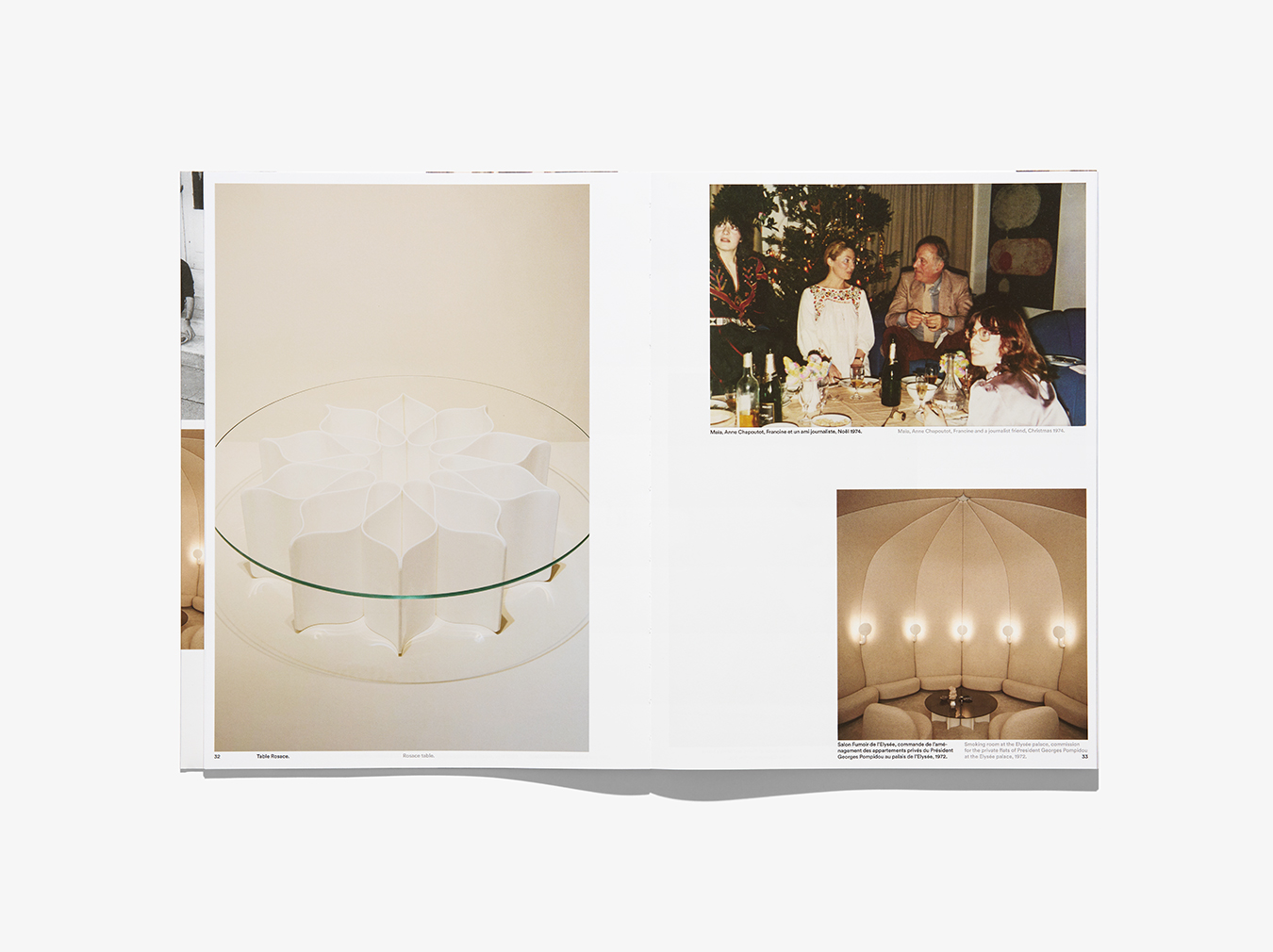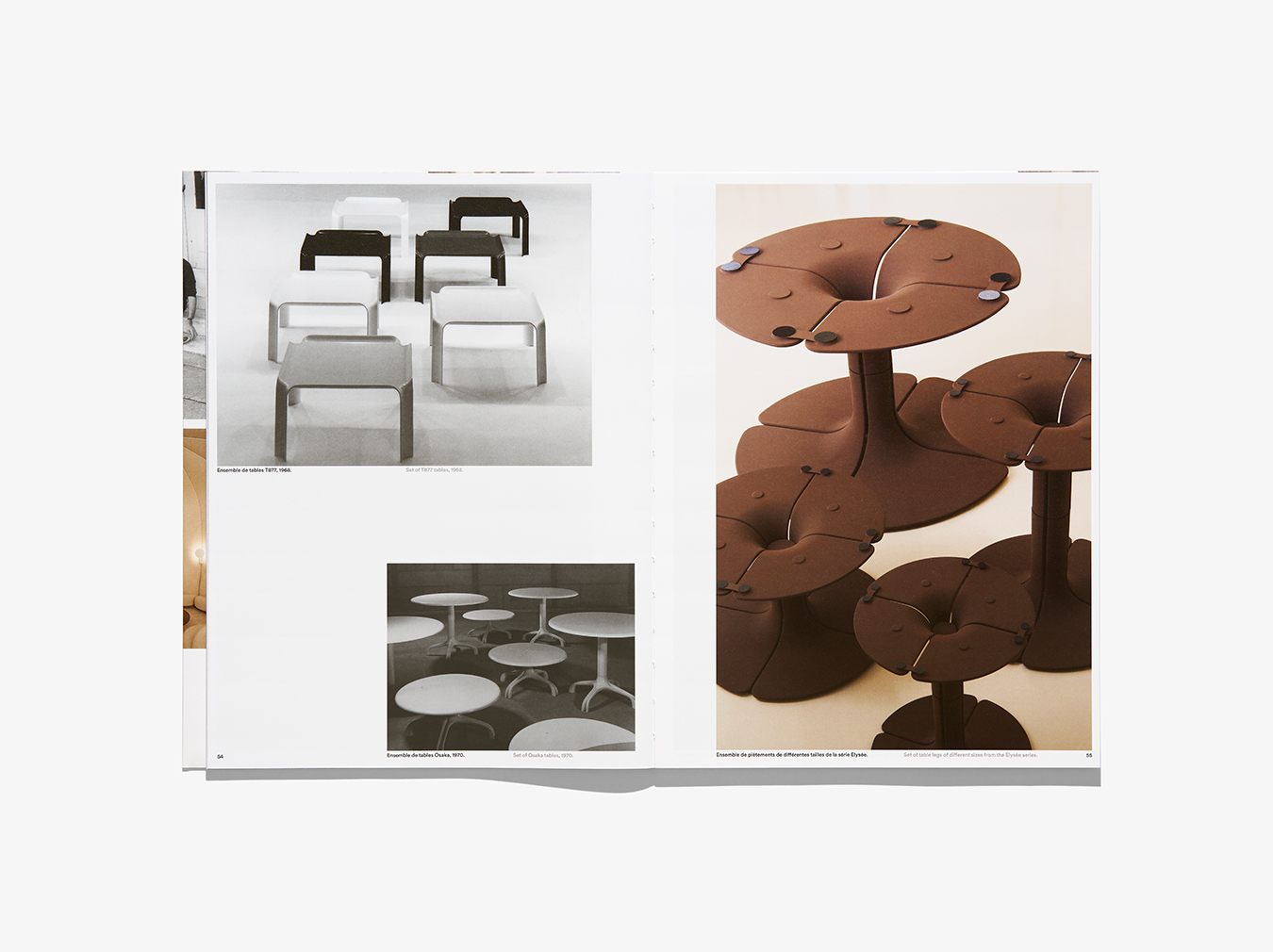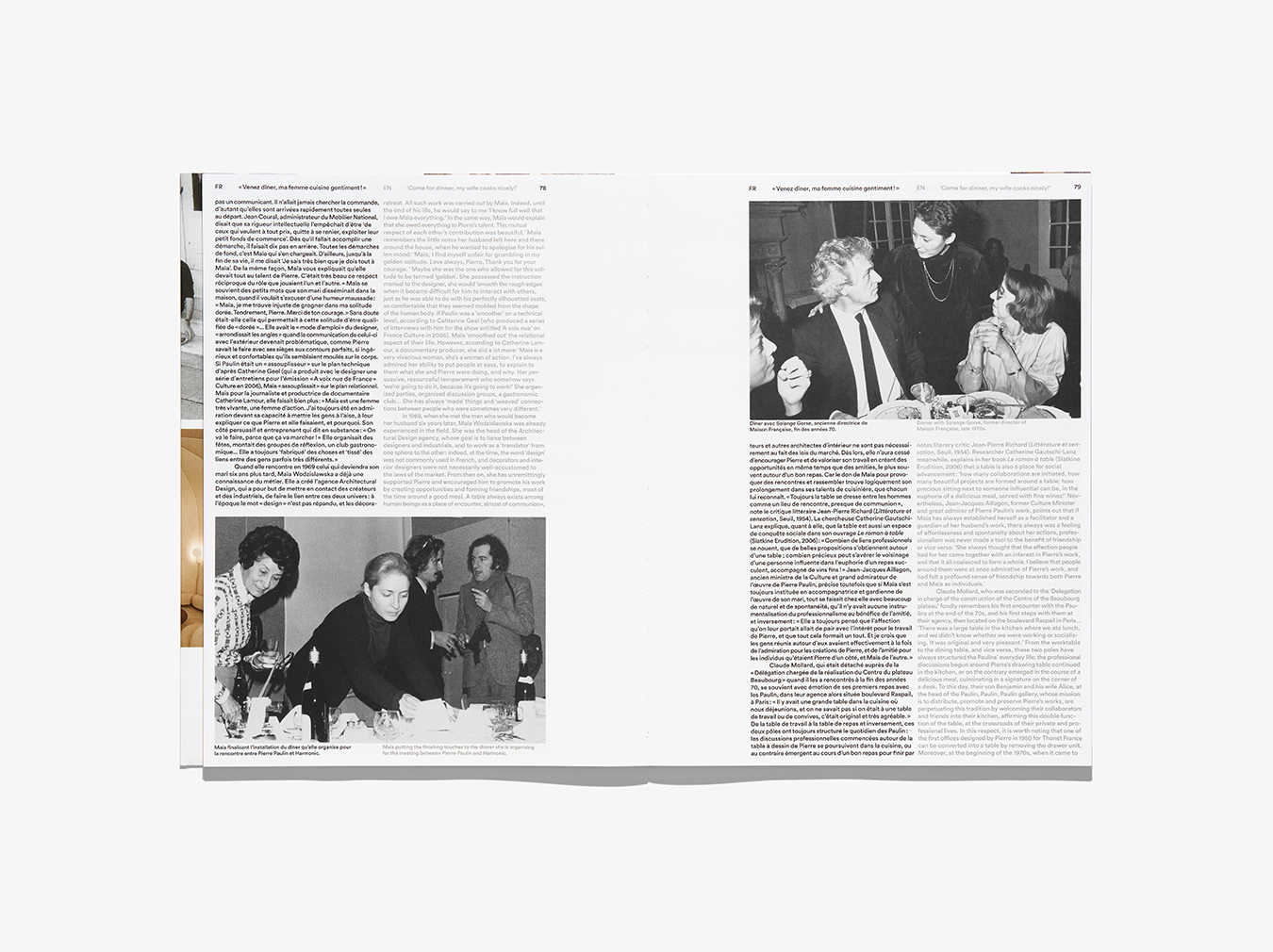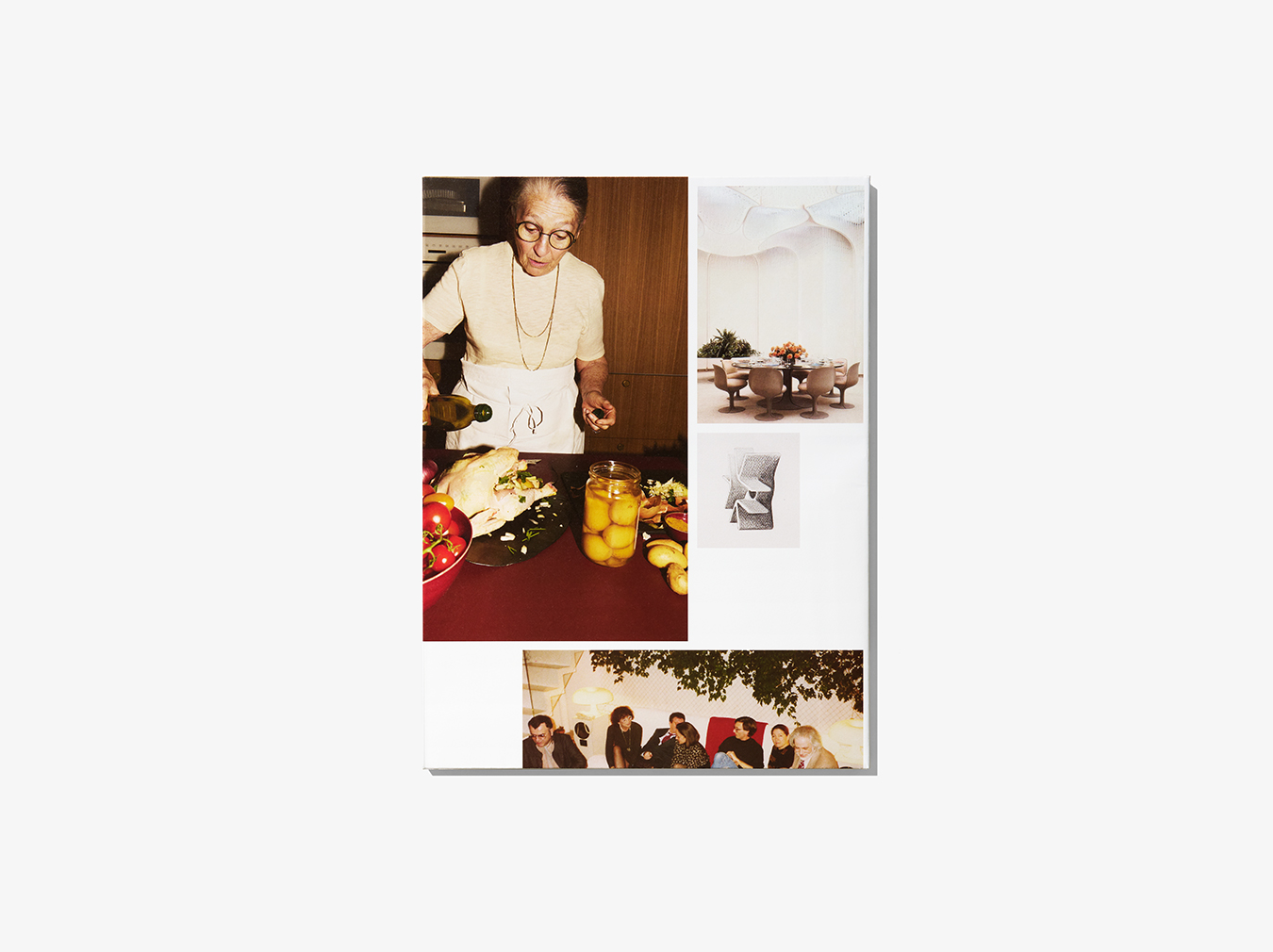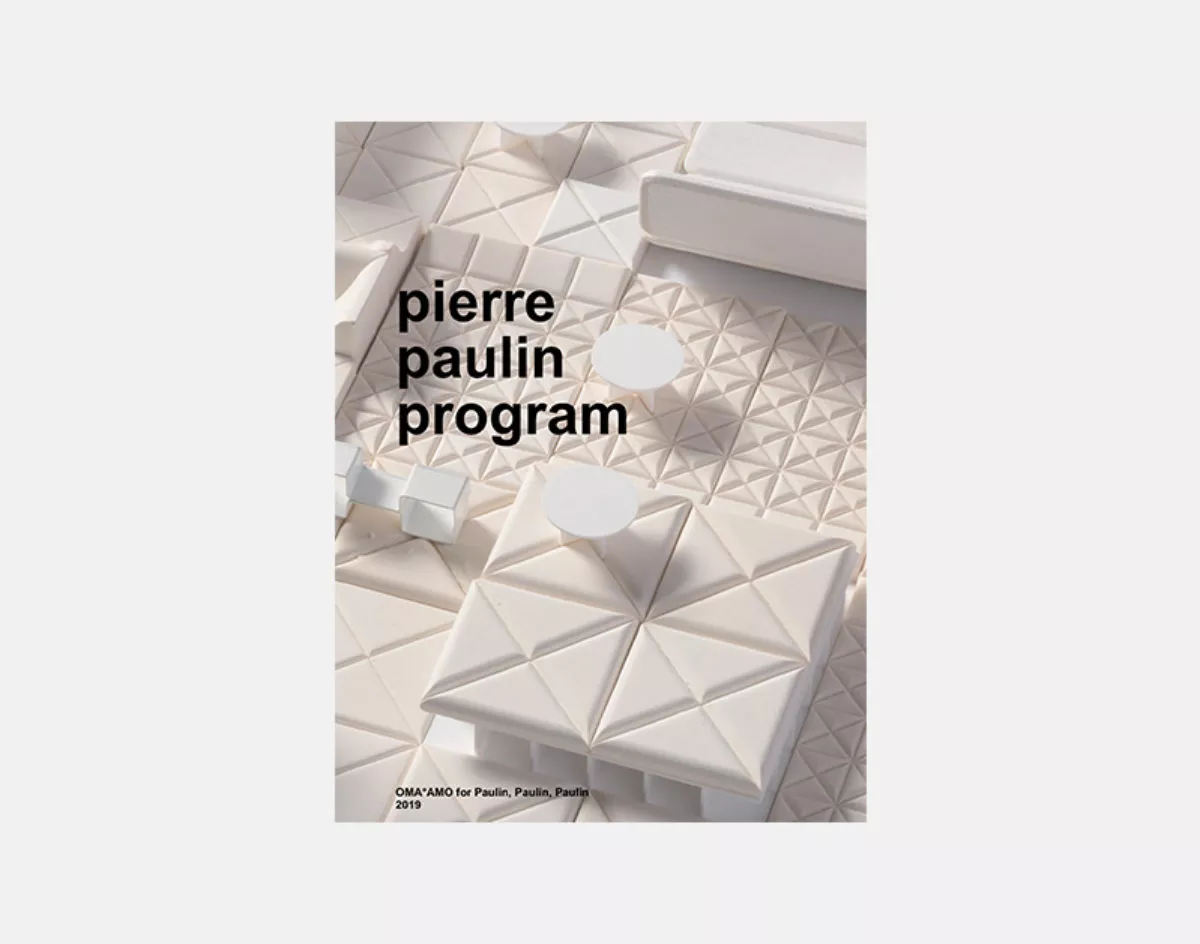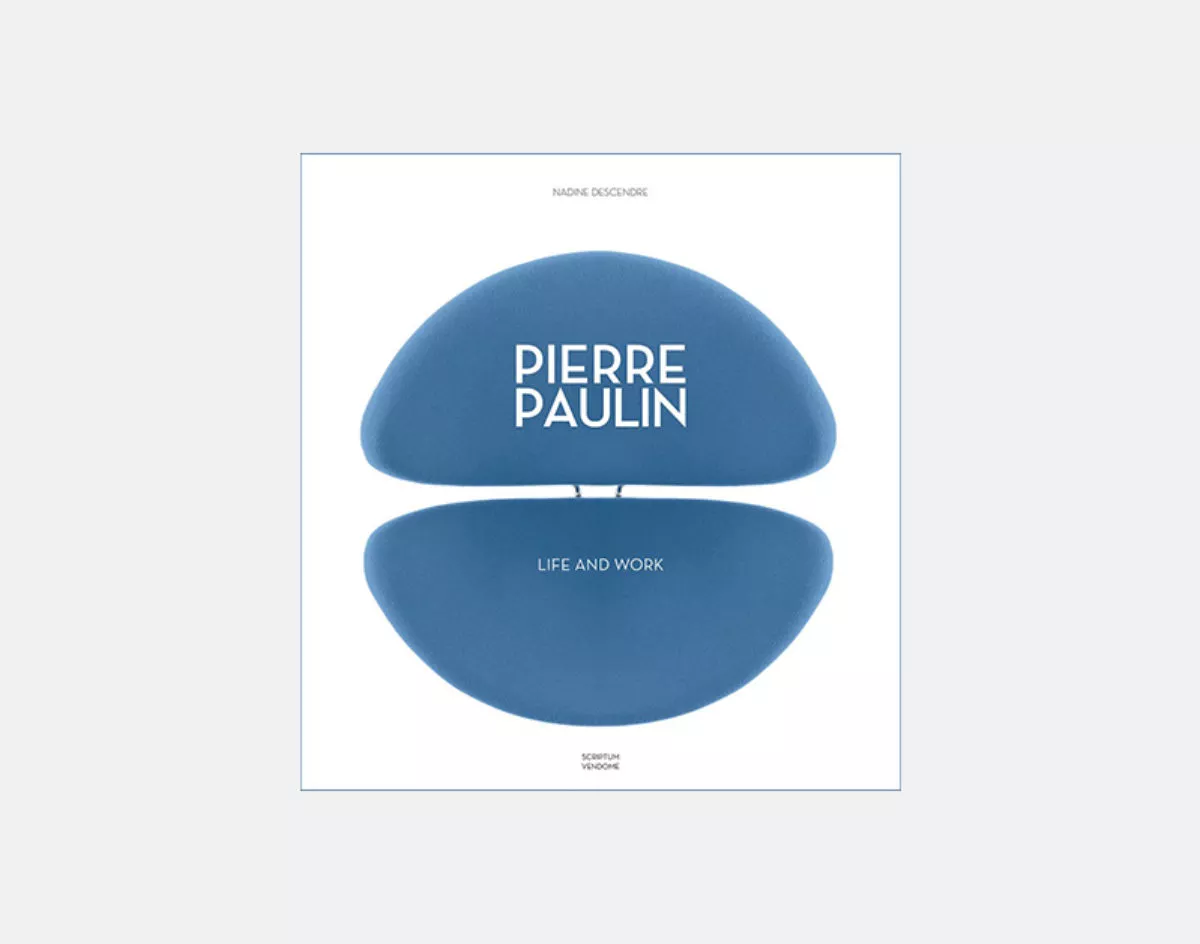Les tables de Maïa et Pierre Paulin
2024
45.00 € ex. tax
Production: in stock
Description
While it is no longer necessary to introduce the French designer Pierre Paulin (1927-2009), whose visionary work marked his era through iconic models such as the Ribbon chair, the Dune module, or the design of the Élysée Salon during Georges Pompidou’s presidency, the role of his wife and associate Maïa deserved to be highlighted, as the alliance of these two contrasting yet complementary personalities was essential to the Paulin journey. While the designer created seats so ingenious and comfortable that they seemed molded to the body Maïa ‘softened’ things on the relational front, creating friendly encounters and professional opportunities, often around a good meal. From the worktable to the dining table and vice versa, these two poles always structured the Paulins’ daily life. Coffee tables, desks from which drawers were removed to transform them into dining tables, sculptural, rustic, or made of precious wood, tables punctuated the creator’s journey based on demand, but also his personal evolution – giving rise to legendary models like the Cathédrale, Élysée, or Rosace designs. Whether drawn or set, star-shaped or casual, the tables of Pierre and Maïa were made to bring people together and create connections, fostering a sense of community. Each one speaks of the same attention to others, of rigor in execution but a rejection of over-polish, and of an inherent intelligence of craftsmanship.
As variations on the object and its function, this book paints an intimate portrait of Pierre and Maïa Paulin: Maïa’s recipes, photos of dinners organized by the couple, are intertwined with Pierre’s sketches and photos of his creations, subtly emphasizing how their life journey and creative path were inseparable for the designer.
Shipping
1-2 weeks
° the amount of VAT is estimated and to be confirmed at the time of the order with your billing and delivery address
